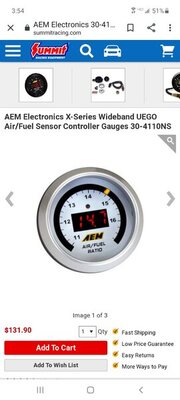mopower440
Active Member
oh i know. Its got a fresh tank of 91The problem is, if you don't use that gas right away, the ethanol starts to evaporate and your gas turns to crap in a hurry.
oh i know. Its got a fresh tank of 91The problem is, if you don't use that gas right away, the ethanol starts to evaporate and your gas turns to crap in a hurry.
Its strange though, when i hit it WOT and it pings, i can back off the throttle just a hair, i mean a hair , like 1mm, and the pinging stops, rpm BARELY drops and the timing im sure doesnt retard any with only letting out that hair, so if it was coming in too quickly, wouldnt it still be pinging when letting of just a hair being the rpm didnt hardly drop?
I try to have all my advance in around 3000 to 3500 rpm. I plug the vacuum advance off, rev the engine up to about 3500 rpm, and set total advance to 34 degrees. Vacuum advance should not be part of your problem, because vacuum drops off if you are pounding on the gas pedal. I don't know about U.S., but here in Canada, Shell V-power is 91 octane and has no ethanol in it. That's what I burn in my '67 R/T with 9.5 compression.messed with it for a while today. Filled it up with 93 octane, not ethanol free but will next time now that i know where to get it. 1 thing i found was the vacuum dash pot that holds the secondary air door closed until the right time was blown out, so replaced it with a good one. Seemed to help a little bit. Then i tightened the secondary air door and seemed to help a small bit more, then limited the secondary air door a little more and it seemed to help a small bit, but all in all it still there some, just not as bad.
I put one link up and here is another about spark plug heat range and pinging. A combination of timing, fuel delivery and plug heat range is need for the best performance.
https://www.enginebuildermag.com/2011/05/understanding-spark-plug-heat-range/
This is where to start. Its gotten 2 common to run a hot plug thinking a cold plug will not last and foul. The mindset has some people backing off compression to run pump gas when they just needed to get away from the oem recommendation and run a colder plug. You could mess with your jets but you should check your afr first... but start w the plugs.

